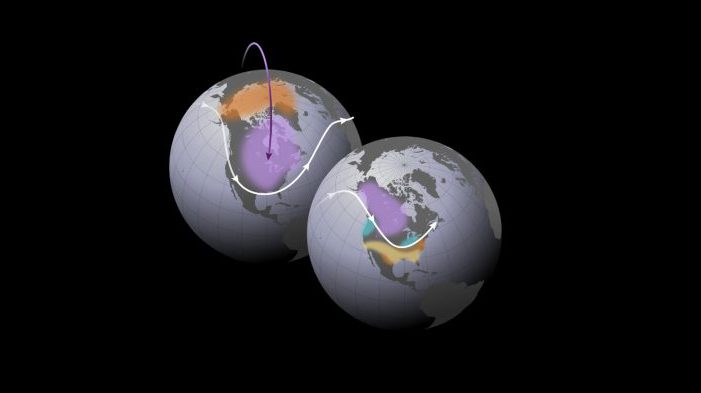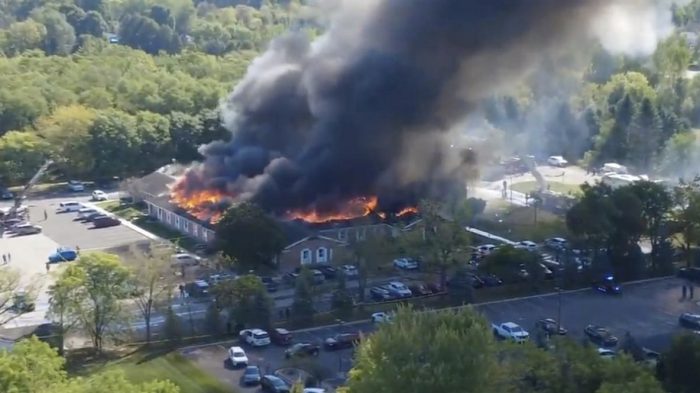Meteorologists warn a rare November stratospheric warming could shatter global winter patterns, unleashing severe cold, supply-chain disruptions, and global climate instability.
Something extraordinary — and potentially historic — is brewing high above the Earth. Meteorologists warn that the stratosphere over the North Pole is approaching a critical tipping point. Should it suddenly warm — an event so rare it has never been observed in November during the satellite age — the entire northern hemisphere could feel the shockwave.
Climatologist Judah Cohen of MIT calls November a “fork in the road,” a moment when the atmosphere could rewire the entire winter forecast not just for the United States, but for Europe, Asia, and the Middle East.
❄️ A Stratospheric Explosion That Could Reshape Winter
A “sudden stratospheric warming” (SSW) can superheat the polar stratosphere by over 100°F in mere days, violently disrupting the polar vortex — the cold air engine that governs winter across the northern hemisphere.
When the vortex collapses, cold air spills south, sometimes plunging continents into weeks of deep freeze and blizzards.
If this SSW happens in November, Cohen says it would be “extraordinary, even unique.” Only two comparable events occurred in the pre-satellite era: 1958 and 1968 — both triggering chaotic winters.
🌎 GLOBAL IMPACT: Why This Matters Far Beyond the U.S.
A November SSW would slam the northern hemisphere with consequences that stretch far beyond weather models:
1. Europe Could Face Another Energy Crisis
A destabilized polar vortex could blast frigid Arctic air deep into Europe — just as the continent remains energy-fragile and dependent on gas reserves.
- Higher heating demand
- Pressure on gas storage
- New vulnerabilities to Russian energy leverage
Israel and Europe rely on uninterrupted Mediterranean gas flows — extreme cold could spike demand and strain supply.
2. East Asia Could Enter a Deep Freeze
Japan, South Korea, and northern China are extremely sensitive to vortex splits. Severe cold snaps can disrupt manufacturing, shipping, and high-tech output — sectors crucial to global supply chains.
3. Middle East Weather Whiplash
Ironically, while the U.S. and Europe freeze, the Middle East — including Israel — often experiences:
- Wet, stormy conditions
- Sharp temperature swings
- Heavy Mediterranean flooding
Israel’s winter rainfall patterns could shift dramatically, affecting agriculture, energy consumption, and military logistics.
4. Global Trade Routes at Risk
Stormy seas, Arctic ice shifts, and extreme cold can:
- Snarl trans-Atlantic shipping
- Slow Asian export routes
- Increase insurance risks
- Disrupt aviation patterns
A disrupted jet stream can also intensify storms across the North Pacific and North Atlantic — major commerce arteries.
5. Food Supply Instability
Sudden cold can wipe out winter crops across the U.S., Europe, and parts of Asia.
In 2018, a similar (but later) SSW event caused:
- Frozen wheat fields
- Severe livestock losses
- Agricultural price spikes
A November SSW would hit earlier — and harder.
🌐 The Battle of Giants: La Niña vs. the Polar Vortex
This winter features a strengthening La Niña, which normally steers storms differently across the Pacific. But a polar vortex disruption could override it — or collide with it — creating unpredictable global climate turbulence.
La Niña guides where the cold goes.
The polar vortex determines how much cold there is.
And right now, the vortex may be preparing to rupture.
❄️ Will the U.S. Freeze or Stay Mild?
Cohen says the winter hinges on one question:
Will the warming in the stratosphere overpower the troposphere?
If they couple strongly:
➡️ A prolonged U.S. freeze begins in December
➡️ Snowstorms become more likely
➡️ Cold extends into early January
➡️ The winter skews decisively colder
If the coupling fails:
➡️ The U.S. gets a surprisingly mild winter
➡️ Storm activity weakens
➡️ Cold air stays trapped in the Arctic
🧭 A Global Crossroads
Meteorologists rarely speak in existential terms, but Cohen does:
The planet’s atmosphere is at a “critical juncture.”
What happens in the next two weeks could reshape:
- Energy markets
- Global food security
- Military operations
- Trade flows
- Regional climate patterns
- Winter hazards across the northern hemisphere
A November SSW would be a planet-changing event, triggering atmospheric chaos far beyond what most people realize.
Winter 2025 may be unlike any we have seen.





